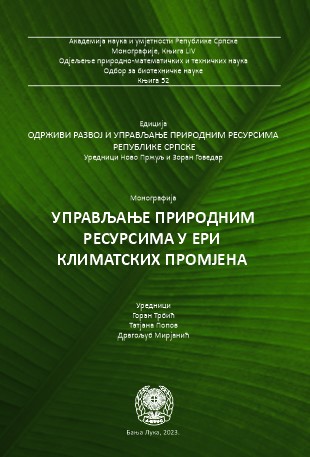Recent Climate Change in the Republic of Srpska and Bosnia and Herzegovina
DOI:
https://doi.org/10.7251/EORU2308567PKeywords:
Climate change, temperature, precipitation, trend, projections, Republic of Srpska, Bosnia and HerzegovinaAbstract
The paper gives an overview of the observed climate change in the Republic of Srpska and Bosnia and Herzegovina; primarily the changes in air temperature and precipitation regime. In the period 1961‒2015 the positive trends of mean, maximum and minimum annual and seasonal air temperatures were determined, which were most pronounced in the summer season, whereas in the autumn season there is only a slight upward trend of temperatures. Warming is most pronounced in the northern part of the territory, whereas the increase is much lower in the higher parts of the Herzegovina region. Unlike air temperature, precipitation trends are, both seasonally and regionally, very variable and of different signs (positive and negative), but mostly insignificant. However, in some areas, the interannual variability of precipitation and the frequency of extreme precipitation have increased. In addition, the paper presents the results of research on possible climate change (based on expected changes in air temperature and precipitation) by the end of the 21st century in the Republic of Srpska and Bosnia and Herzegovina according to the climate scenario RCP8.5. The results indicate more pronounced climate change related to increasing annual temperatures up to 5 °C and reducing annual precipitation by up to 30%, whereas the deficit in the summer season (June, July and August) could go up to 40% by the end of the 21st century. Such changes point to the serious problem of drought and water scarcity and the need for more significant integration of climate change issues into planning and strategic documents.
